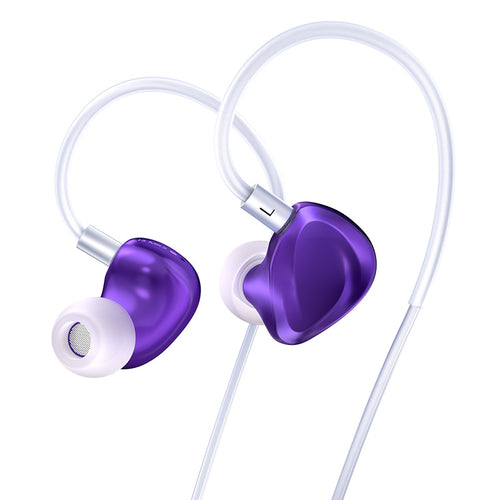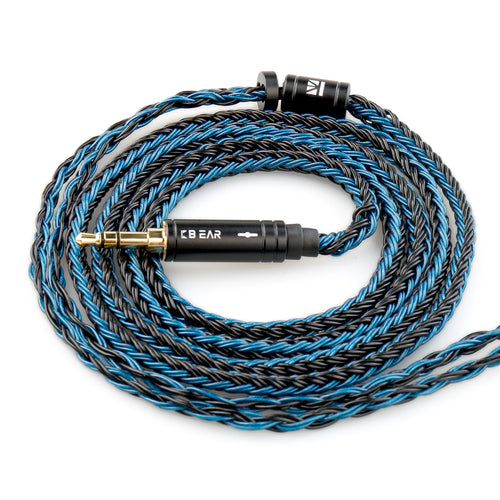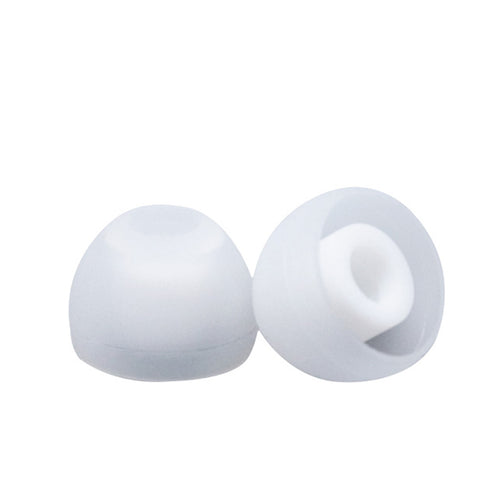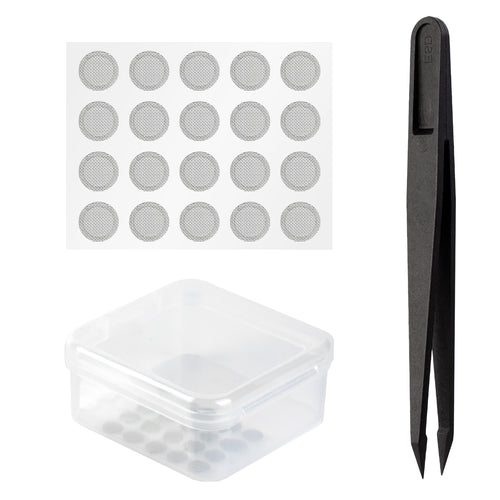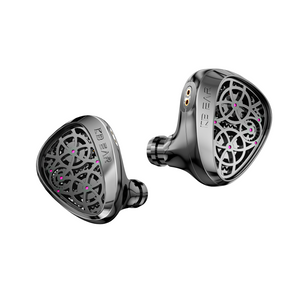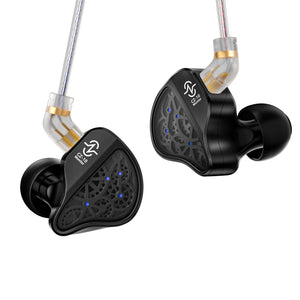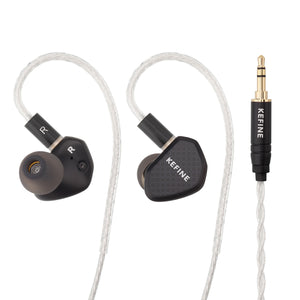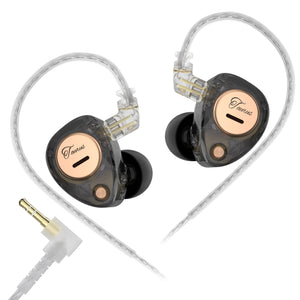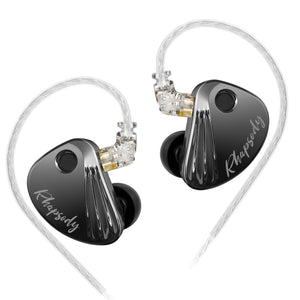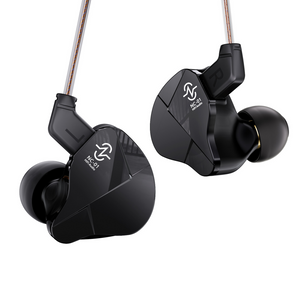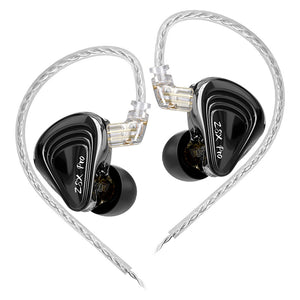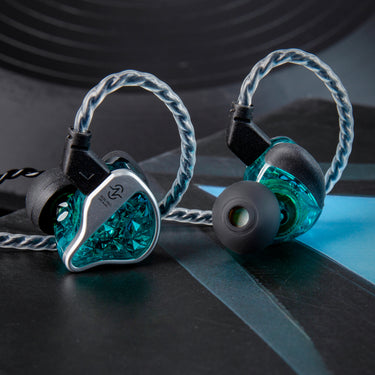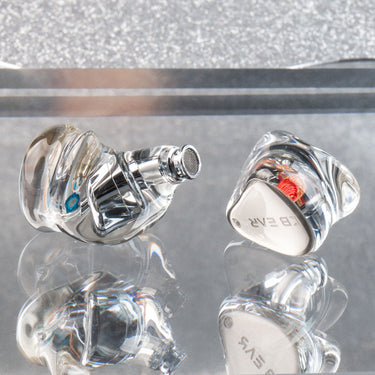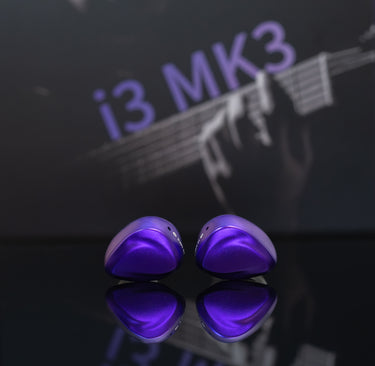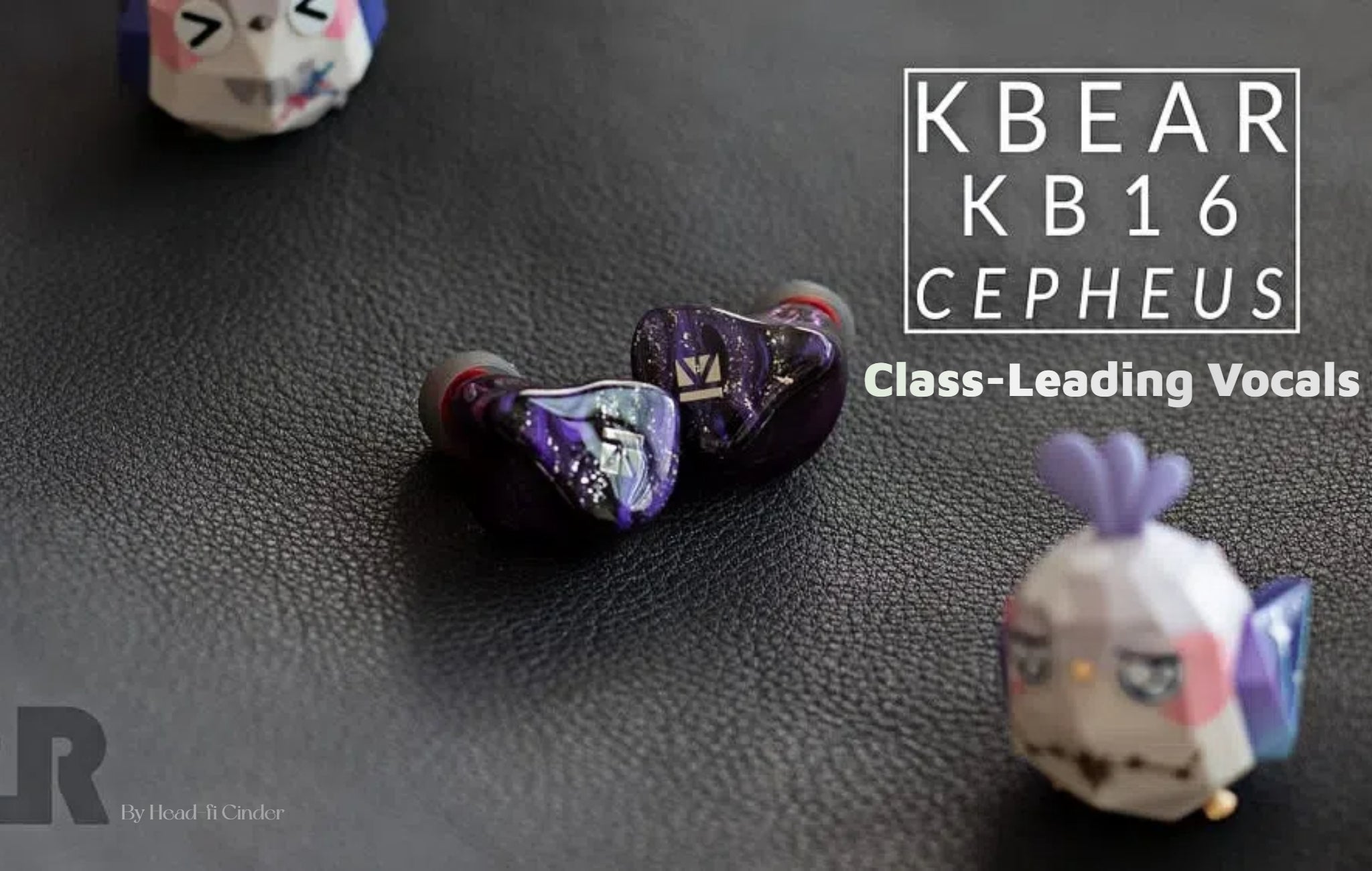KBEar KB16 Cepheus Review: Class-Leading Vocals
The KB16 Commands Excellent Control of Vocals While Maintaining Excellent V-Shaped Sound
KBEar is a sub-brand of popular online audio vendor, Keep HiFi. Under this sub-brand, Keep HiFi has released a number of IEMs, though none as expensive as their newest model, the KB16 Cepheus. This IEM features eight drivers per side and an aggressive price point that aims to undercut the competition. Does this hybrid IEM remain competitive in an ever-intensifying market? Let’s find out.I purchased my Cepheus unit directly from Keep HiFi. You can find it for sale here, for $248.
About My Preferences: This review is a subjective assessment and is therefore tinged by my personal preferences. While I try to mitigate this as much as possible during my review process, I’d be lying if I said my biases are completely erased. So for you, my readers, keep this in mind:
- My ideal sound signature would be one with competent sub-bass, a textured mid-bass, a slightly warm midrange, and an extended treble.
- I have mild treble sensitivity.
Tech Specs
- Drivers: 2x Dynamic Drivers (10mm + 6mm), 6x Balanced Armature Drivers (custom)
- Sensitivity: 102 dB SPL/mW
- Impedance (1kHz): 14 Ω
- Cable: Detachable 0.78mm 2-pin w/ 3.5mm termination
Sound Signature
Sonic Overview:
The Cepheus is a V-shaped IEM with impressive vocal presence and clarity. It has a lifted mid-bass, extended sub-bass, slightly recessed lower midrange, and an emphasized upper midrange. Its treble is paired fairly linearly to the upper-midrange, emphasized mostly the upper-treble for added “air” and “sparkle”.Sonic Breakdown:
Treble: Songs used: In One Ear, Midnight City, Outlands, Satisfy, Little One, Show Me How To Live (Live at the Quart Festival), Bittersweet SymphonyI have a lot of appreciation for the care that went into crafting the KB16’s treble. It was obvious to me that, after just a few moments of listening, its treble is not the product of a pile of generic drivers. It is clear, detailed, and concise. While still emphasized beyond the midrange, this increase in presence is carefully metered to highlight detail and air, rather than brighten up the entire presentation for the sake of faux “resolution”.
The KB16’s impressive treble tuning yields great results in “spacious” songs like Midnight City. Its gentle emphasis on the upper register allows listeners to behold treble-bound details without being dominated by them. The KB16 is, therefore, fairly treble-transparent — a trait I seek out for my critical-listening IEMs.
Midrange: Songs used: Flagpole Sitta, Jacked Up, I Am The Highway, Too Close, Little Black Submarines, Bohemian Rhapsody, Cash Machine, Chasm, Dead!, The Parts
Transparent is the name of the KB16’s game. Its midrange takes on an organic, effortless, and uncolored stance that nicely complements its crystal-clear treble and inoffensive bass. I consistently found myself picking up micro-details and textures in the midrange that simply don’t show up on ~$250 IEMs very often — and certainly not on many V-shaped hybrids. This detail-oriented tuning works very well in tracks like Dead! that aim to submerge listeners in sudden burst of texture. The wailing of distorted electric guitars and beating of drums cascade off of the KB16’s drivers with depth and believable staging.
Vocal-centric tracks like Bohemian Rhapsody leverage the KB16’s incredible capacity for vocal rendering. The steep layering of harmonized voices plays incredible well, capturing a wealth of inflection. On the opposite end of the spectrum, the KB16’s excellent spatial performance leverages a striking sense of emptiness to complement Chris Cornell’s solemn vocals in I Am The Highway. The KB16’s appropriately-rich lower-midrange fills out the track nicely, ensuring that it does not feel hollow or thin.
Bass: Songs used: Moth, Gold Dust, In For The Kill (Skream Remix), War Pigs (Celldweller Remix), Cranium
The KB16’s bass is emphasized, but not commanding. It fills out the lower-register nicely, lending tracks satisfying richness. Drums and bass guitars have organic weightiness, hitting and rolling in the back of the soundstage. Moth’s bass guitar was articulate and vocal, remaining clear and free from smudging. The massive, deep drum hits at the start of Cranium were likewise full-bodied and articulate. They crashed into existence with weight and authority, then decayed into the background organically.
Synthetic bass lines like those from Gold Dust dig deep and communicate a strong sense of depth from the KB16’s sub-bass. In For The Kill (Skream Remix)’s sonorous bass line is likewise well-expressed. The KB16’s capacity to articulate lower-register queues and lines is strong, but usually remains within bounds of “hear, not feel” sub-bass for most tracks at moderate volumes.
Electronic music is a fun listen through the KB16, but lacks the heavy-hitting punchiness that some listeners may be expecting. The diverse set of bass elements in War Pigs (Celldweller Remix) are fully articulated, but spend most of the track teetering on the edge of true punch and rumble, usually erring on the side of simple observation and not true visceral movement of air.
Packaging / Unboxing

KBEar doesn’t usually splurge with packaging, and that remains true with the KB16. I’m cool with that, so long as the IEM within is safe. The KB16’s packaging does indeed fulfill its role as protector.
Build
Construction Quality

The KB16 features all-resin shells. It feels smooth and light in the hand. Both colorways the Cepheus are transparent and give a clear view of the electronics within.

The top face of the shell features 0.78mm sockets molded flush with the surface of the shell. One can also spot a sizeable brass-fitted vent.

The inside face hosts the Cepheus’s plastic nozzles. These look to be well-designed, but ultimately lack the sturdiness and longevity one gets with metal nozzles. Even though this is a fairly “cheap” IEM by audiophile standards, $250 is a sufficient budget with which to include common enhancements like metal nozzles.

The Cepheus’s cable uses a 4-core braided design with silver-plated-copper wires within. It is terminated with a 3.5mm jack housed in a silver-painted plastic shell. The cable’s outer sleeve is made from grippy clear plastic. This high-friction finish, combined with the cables softness and modest braid diameter, makes it highly tangle-prone and tedious to untangle. I’ll be swapping mine out for a cheap 3.5mm Zonnie once the review period is over.
Comfort
Disclaimer: comfort is a highly individual metric — no two people will have the same experience.The KB16 is very comfortable for me. I can wear it indefinitely without discomfort, though I try to take breaks once every 60 minutes for the sake of my ears’ health.
Power
I found the Cepheus to be easy to drive with common sources. My Zenphone 10 was more than capable of drawing out volume from the KB16, as was an Apple Dongle, Meze Dongle, and LG V40.Warranty and Repair
For the specifics of the KB16’s warranty, see the general Return, Warranty, and Replacement Terms on Keep HiFi’s website.Keep HiFi has a 30 day return window — so if you don’t like the Cepheus, you should have a decent window in which to initiate a return. Warranties are executed by the customer paying for the shipping to Keep HiFi. Keep HiFi will then pay to the shipping back to the customer.
Accessories


Inside the box you’ll find:
- 1x 3.5mm cable
- 1x zipper case
- 9x pairs of silicone eartips
That said, I find KBEar’s justification for providing a relatively sparse accessory suite understandable, and dare I say acceptable, after listening to the KB16 — The price to performance ratio you get here is incredible. And for them to keep the price as low as it is, they cut the “accessory corner” rather than the “build quality corner”.
The KB16’s cable is not bad, or terrible, but is a far-cry from the best you can get from a ~$250 IEM. It is finished in an unnecessarily-grippy plastic layer, lacks metal shells for the 3.5mm jack, 2-pin connector, and Y-splitter, and is somewhat thin. That said, its light-weight and soft construction makes it very ergonomic, assuming you haven’t accidentally gotten it tangled.
The eartips included in the box are varied and decent, but are notably missing high-end options such as foam, foam hybrid, and “liquid silicone” varieties. Again, there’s nothing wrong with this selection of eartips (they’re fairly comfortable after all), but other IEMs in this price range do offer more in terms of quantity and quality.

The KB16’s case is, likewise, underwhelming. Its a standard compact semi-hard zipper case. Cases like this are totally fine for storage and careful transport, but don’t possess enough structural integrity to protect the IEM within from crushing forces. I recommend swapping to a Pelican 1010 or similar clamshell. Additionally, this case is fairly cramped for an IEM of the KB16’s size — you’ll find it uncomfortable snug when trying to sneak a DAC or spare eartips into the case.
Comparisons
Comparisons are selected solely based on what I think is interesting. If you would like me to add more comparisons, feel free to make a request in the comments below!1: Campfire Audio Cascara ($499)
The Cascara is a staple of my collection; it leverages a single dynamic driver to generate an excellent, dramatic, V-shaped sound signature. It is roughly twice the price of the 8-driver-per-side Cepheus. The Cepheus has a lighter, less-robust shell, is lacking the Cascara’s metal nozzles, and has a much leaner eartips selection. The Cascara’s cable is also significantly nicer to handle and wear.
The Cascara has a more pronounced mid-bass and sub-bass. Its treble is brighter, but doesn’t extend as far as the KB16 and is slightly graininer. The KB16 has an “airier” midrange that more-easily communicates a sense of space and emptiness. The Cascara’s warmer, smoother midrange is a more relaxing listen, though at the subtle cost of minor treble detailing. Both IEMs bat hard towards their respective tuning styles — and they’re not directly comparable on that front.
I enjoy both IEMs — but there’s definitely a difference in which style of music I prefer with which IEM. Music that leans heavily on boisterous bass lines, or music with lean mastering styles are a little more enjoyable for me with the Cascara. For the other types of tracks, I find myself going back and forth between the two IEMs. The KB16’s impressive vocal performance is addicting, but the smoothness of the Cascara’s midrange is likewise an enjoyable listen. Both IEMs are great, though their large gap in pricing will likely sway those listeners who are cost-sensitive.
2: Rose QT-X ($329)
The QT-X is a 7-driver hybrid IEM featuring 1x dynamic driver and 6x balanced armature drivers per-side. It has a warm, smooth, and bassy W-shaped sound signature with a significant emphasis on midrange articulation and tone. It is about $100 more expensive that the KB16 and has a larger, but less secure case, more eartips, an ergonomically superior cable, and metal nozzles. The QT-X also comes with a USB-C DAC while the KB16 does not.
Both IEMs present emphasized bass and treble, though their midranges are quite divergent. The KB16 has a broader, slightly less-focused mid-bass than the QT-X, though the QT-X’s sub-bass is more reserved. The QT-X’s midrange is warmer and more emphasized than the KB16, and as such switching between the KB16 and QT-X and can be quite disorienting. The KB16 has a brighter treble and more-linear upper-treble. Both IEMs present impressive levels of detail retrieval, though the KB16’s style surfaces upper register details a little more easily.
Your choice between these two IEMs will likely come down to your midrange preferences. If you like warmer, more-linear midranges with great overall emphasis, you’ll probably stick with the QT-X — if you’re price sensitive, or want a more traditionally-tuned midrange, the KB16 is likely more your speed.
3: Kiwi Ears Orchestra Lite($249)
I find the Orchestra Lite to be the most interesting comparison of the bunch. To my ears, it sounds like a close sibling of the KB16, diverging most in the lower register. The KB16 shares many similarities with the Orchestra Lite’s midrange and treble, matching its propensity for air nearly blow for blow. In fact, if you were to blind-test me, I’d probably believe that these IEMs were made by the same exact brand.
The major distinction between the OL and the KB16 comes down to bass and lower midrange. The KB16’s bass is significantly more pronounced than the OL (thanks to its dynamic drivers). The OL has a cooler, more neutral lower-midrange and a slightly brighter treble. The KB16’s upper midrange is more pronounced, but not by much.
Materially, I find that the Orchestra Lite’s shells feel much sturdier in the hand — though it too lacks metal nozzles. The Orchestra Lite doesn’t have any venting, but the KB16, thankfully, does. The Orchestra Lite’s cable is thicker and less grippy, ultimately feeling much nicer in the hand and tangling less-often. Both IEMs have cramped, unforgiving cases, though the KB16 has better eartips, and a wider variety to boot.
Which IEM do I recommend? Well that will come down to how much bass you want. If you’re striving for a mature, but mostly mainstream V-shaped tuning, you’ll gravitate to the KB16. If you can live with some bass roll-off, you might appreciate the shell-feel and cable of the Orchestra Lite more. Either way, no matter which IEM you go with, you’ll probably want to buy a new case.
Conclusion
The KB16 has earned itself a place in my rotation — knocking out a few IEMs that I’ve been listening to for years. Its incredible price-to-performance proposition, combined with its phenomenal tuning and strong ergonomics, make it a compelling offering to those who don’t want to compromise on detail while maintaining healthy bass response. The KB16 is not a perfect IEM, and I do have my critiques, but ultimately they are small in the face of the mountain of what it does well. Great job KBEar, this is an impressive device.Who This is For
- Fans of V-shaped sound
- Listeners who want Orchestra-Lite style sound with more bass
- Vocal-centric listeners
- Buyers seeking maximum performance in a traditionally-tuned package
Who This isn’t For
- Listeners who want bass-dominant sound
- Those seeking reference tuning
- Buyers who want a complete package and don’t want to buy 3rd party accessories
- Buyers who enjoy treble-dominant sound signatures
